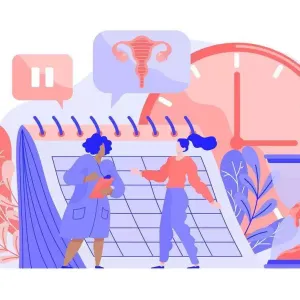

Our Review Process
Our articles undergo extensive medical review by board-certified practitioners to confirm that all factual inferences with respect to medical conditions, symptoms, treatments, and protocols are legitimate, canonical, and adhere to current guidelines and the latest discoveries. Read more.
Our Editorial Team
Shifa Fatima, MSc.
Author
Dr. Apoorva T, MHM.
MEDICAL ADVISOR
Kumbhak Therapy For Diabetes
Finding out that you have Diabetes can cause anxiety and restlessness. One might start feeling that there is no going back and that life ahead will be filled with medications and giving up on favourite food. Also known as the silent killer, it takes away a lot from people with diabetes in terms of how one leads their life and the number of restrictions labelled upon them.
‘What should I consume for breakfast? Should I start walking every day?’ - even the simplest questions seem difficult to answer. This is where Kumbhaka Pranayama can help you relieve mental anguish and maintain your health. Also know more about asana for diabetes
Table of Contents
What is Kumbhak Pranayama?
A form of breath retention, Kumbhaka, is considered the most impactful aspect of pranayama. It is a type of yogic breathing technique where the human body is compared to a pot with two openings and is a practice that needs serious investment in terms of effort and punctuality.
What is kumbhak therapy for Diabetes?
Kumbhaka is a method of Pranayama, that includes retention of breath, with inhalation of air, retention and exhalation done in a particular ratio. It is highly beneficial for people with diabetes as it helps in lowering blood sugar and improves oxygen concentration in blood.
Types of Kumbhak Pranayama
Yes, you read that correctly - Kumbhaka can be performed in two different ways - Antara and Bahya, which translates to interior and exterior in Sanskrit. The most common type of Kumbhaka is the Antara or Interior Retention Technique, which is practised in different stages based on one’s comfort level.
Beginners can start with a 1-1-2 ratio. In simpler words, whatever you inhale, is then retained for the same duration. The exhalation, however, is double the duration. As you get more comfortable, you move on to stage two, where the ratio is 1-2-2. Stage 3 involves a ratio of inhalation-retention-exhalation as 1-3-2. The final stage or the stage where one can reap the maximum benefit is when you can practice a ratio of 1-4-2.
The Bahya Kumbhaka or the External Retention Technique involves keeping all three steps, i.e. inhalation, retention, and exhalation at the same duration.

kumbhaka pranayama benefits
Numerous advantages of kumbhaka pranayama are listed below:
- Focus and awareness: The act of holding one's breath (for the first time) causes additional physical tensions, however these tensions shouldn't be painful. Students are compelled by these tensions to be vigilant and conscious of the changes taking place in both the body and the mind. The same awareness and focus gradually become effortless and fluid with practise, giving one more control over the retention of breath.
- Chest, Diaphragm, and Lungs: Kumbhaka Pranayama quickly affects the lungs, allowing for both increased airflow and complete lung cleansing. Antara kumbhaka, in which the lungs are filled with air (prana), aids in providing a better supply of oxygen to the rest of the body, while bahya kumbhaka, in which the lungs are entirely empty and there is no free flow of prana, causes the lungs to get ready to take in more oxygen during the subsequent inhalation, thereby expanding their capacity. Additionally, doing so clears and cleans the lungs, expelling impurities from the body.
- Bandhas, Organs, and Stimulation: When Kumbhaka Pranayama is performed in conjunction with Jalandhara Bandha, Uddiyana Bandha, and Mula Bandha, the prana that remains still throughout the entire body aids in the purification of the numerous organs connected to these bandhas, such as the lungs, abdominal organs, and reproductive organs. Additionally, these organs receive a new supply of energy when there is no prana in the body (complete silence), which causes them to continuously rid themselves of toxins. With time, the body's organs are regularly stimulated, energy levels rise, and toxins are removed, keeping the body healthy.
- Calming and Soothing: At the basic level, students who do Kumbhaka Pranayama under the direction of a yoga teacher will have a sense of calmness and serenity throughout the practise (of course, this may not occur on the first try). The slowing of the breath has an impact on the nervous system, which is why it has such a calming and soothing effect. During this type of breathing, the vagus nerve (please refer here) is stimulated, which further influences the sympathetic nervous system with the control of the breath. The signals the brain receives, which have an effect on the parasympathetic nervous system, cause the "fight or flight" response to gradually change into "rest and digest." The heart rate is decreased as a result of this nerve being trained to maintain calmness with breath retention (greater awareness), which also helps to keep the blood pressure under control.
- Meditation and spirituality: At an advanced level, Kumbhaka Pranayama practise helps pupils get ready for meditation and eventually the spirituality path. The mental force, chitta, is believed to move when prana (the life force) moves, and remains still when prana is motionless (without movement) according to the Hatha Yoga Pradipika. Additionally, pratyahara (sense withdrawal), which is a step towards meditation, is made easier with this calm state of mind. A yogi's mental process pauses (producing a vacuum - blank), which is necessary for meditation and discovering the appropriate route to spirituality, when the mind is clear of worries, emotions, feelings, etc.
Which Kumbhak Pranayama is good for people with diabetes?
You may ask which type is more suitable for people with diabetes. Even though both kinds of Kumbhaka have shown significant gains in people with diabetes, the Antara Kumbhaka has shown superior benefits in controlling blood sugar. The biggest reason is that Antara Kumbhaka has a better possibility of recreating a situation of intermittent hypoxia, which is a situation where the body lacks enough oxygen but for a short period.
Why is Kumbhak Pranayama good for diabetes?
One must note that Kumbhaka is practised with a relaxed mindset. When this form of Pranayama is practised, it strengthens the diaphragm and increases the lung capacity. What generally happens during the retention of breath is an increase in carbon dioxide.
What! More Carbon Dioxide!? and that instantly triggers the parts of the brain that keep a watch on the respiratory pathway. They demand the brain for better oxygen retention and interchange in return, thereby increasing the amount of oxygen in the blood.
This increase in oxygen concentration rewards the body with improved health, clears the mind of stress and anxiety, and reduces a possible strain on the circulatory pathway.
This situation of intermittent hypoxia increases the enzymatic activity and helps in the breakdown of sugar in a more efficient manner. This directly impacts insulin sensitivity as studies have shown that insulin resistance markers were at a better and refined state during a stage of intermittent hypoxia compared to any form of regular breathing.
How to Practise Kumbhak Pranayama?
- Like every other yoga asana, Kumbhaka begins with sitting in a comfortable posture of meditation, where the spine, neck, and head are upright and aligned.
- Commence with simple natural breathing, through both your nostrils.
- Once you gain control over your breathing, you can step into your choice of Kumbhaka Pranayama.
- If you are performing Antara Kumbhaka - start by taking a deep breath for a set count. For starters, one may count to 4, as they inhale. Use your thumb and ring finger to close your nose, and hold your breath for another count of 4. Now, slowly release your hand and exhale through your nostrils for a double count, i.e., to a count of 8 in this case.
- Repeat this cycle for 10 to 15 minutes.
- If you are performing Bahya Kumbhaka, the inhalation, retention, and exhalation must be of the same count
- You must not hold your breath beyond your range or capacity.
Other Benefits of Kumbhak Therapy for Diabetes
Yoga is a broad path to healthy living, and Kumbhaka Pranayama comes along with several other benefits.
- The process of breath retention helps cleanse your respiratory system.
- Enhanced oxygen retention means that your mind is all the more relaxed and focused, while keeping stress and fatigue at bay.
- One of the most ideal pranayamas for relieving acidity, constipation, and gastric issues.
- Helps with asthma and allergies by improving the patency of channels.
Are you ready to breathe better now?
It is common for people with diabetes to feel the stress of managing the disease. A smart choice one can make when it comes to tackling Diabetes is to incorporate Yoga and Pranayama into your routine. Breathing exercises under Pranayama have a potent influence on lowering blood sugar. Once you switch to Yoga, you can finally win over the conflict of side effects and sidelining one’s body by infusing it with an unending supply of medications. While it is not easy to master and takes time to learn, they are not hard to grasp either and help build a positive outlook on life.
Bottomline
Pranayama and yoga are two important assets in dealing with health-related conditions and mental health issues. Even chronic conditions like diabetes are known to show great results in terms of the symptoms and other complications with the help of pranayama and kumbhaka pranayama. This is a form of breath retention technique that needs practice, effort, and discipline. You can engage in the different types of kumbhaka pranayama – if you are a beginner, it would be better to do so under the guidance of an expert for the best results. It is highly beneficial as it increases the level and concentration of oxygen in the body and can clear the mind of any stress or anxiety.
FAQs
Does deep breathing lower blood sugar?
Deep breathing, along with breath retention, can help in lowering blood sugar. When done together, it increases the demand for higher oxygen retention, leading to a higher concentration of oxygen in the blood. This triggers certain enzymatic activities that help break down sugar in a better manner and improve insulin sensitivity.
Can breathing exercises help with diabetes?
Breathing exercises help relieve your mental stress, keep you healthier, improve the circulatory pathway, and raise the oxygen concentration in the blood. These factors help refine insulin sensitivity and enhance the breakdown of glucose in the blood, something that highly benefits people with diabetes.
What are the benefits of breath retention?
Breath retention has a multitude of benefits. It boosts lung capacity and strengthens the diaphragm. It reduces stress and anxiety, improving longevity. It also clears the respiratory channels, and helps with asthma and allergies. Retention of breath, also has gastric benefits and alleviates acidity and constipation.
Disclaimer
This website's content is provided only for educational reasons and is not meant to be a replacement for professional medical advice. Due to individual differences, the reader should contact their physician to decide whether the material is applicable to their case.
More by Shifa Fathima

अर्जुनरिष्ट के फायदे, खुराक और नुक्सान

मधुमेह के लिए मधुनाशिनी वटी: उपयोग, लाभ, खुराक और दुष्प्रभाव|

मधुमेह को नियंत्रित करें भारतीय आहार से





